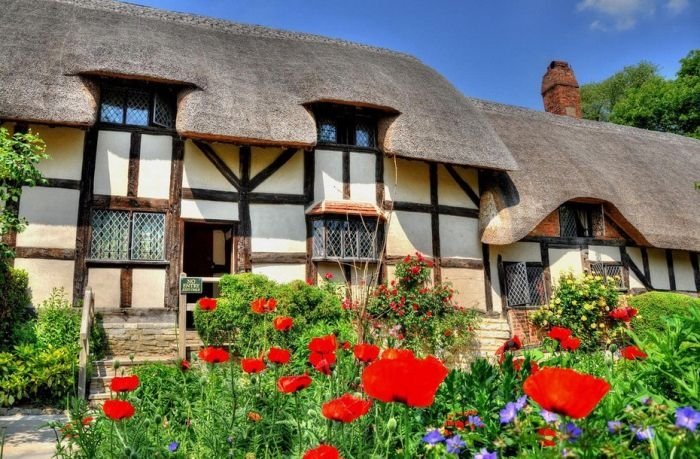|
|
House With A Beautiful Thatch Roof, England, United Kingdom
|
The supporting structure of a roof usually comprises beams that are long and of strong, fairly rigid material such as timber, and since the mid 19th century, cast iron or steel. In countries that use bamboo extensively, the flexibility of the material causes a distinctive curving line to the roof, characteristic of Oriental architecture.
Timber lends itself to a great variety of roof shapes. The timber structure can fulfil an aesthetic as well as practical function, when left exposed to view.
Stone lintels have been used to support roofs since prehistoric times, but cannot bridge large distances. The stone arch came into extensive use in the ancient Roman period and in variant forms could be used to span spaces up to 140 feet (43 m) across. The stone arch or vault, with or without ribs, dominated the roof structures of major architectural works for about 2,000 years, only giving way to iron beams with the Industrial Revolution and the designing of such buildings as Paxton's Crystal Palace, completed 1851.
With continual improvements in steel girders, these became the major structural support for large roofs, and eventually for ordinary houses as well. Another form of girder is the reinforced concrete beam, in which metal rods are encased in concrete, giving it greater strength under tension.
|
|









